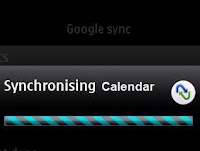.jpg) |
| Image Source |
Here the time saving tips with some hidden tricks to increase the browsing, download and start-up speed of Chrome browser.
Note: All these tips are same for Google Chrome 19 or above versions.
1. Set high priority to Google Chrome process.
Windows OS shares the processor time between all running processes based upon their priority. Setting the higher priority to a process means that the process is more important to the operating system compared other low priority processes. This will gear-up the start up time and browsing speed of the browser. To set a high priority to Google Chrome, open the Windows Task Manager by pressing "Ctrl+Shift+Esc" together. Then run the Browser and from Task Manager Find out the chrome.exe. Right click on it and set the priority higher.
 |
| High Priority to Chrome.exe |
2. Disable Google Chrome automatic updates.
This will stop the Google chrome update process "GoogleUpdater.exe" and let the browser work more lightly every time. It helps the browser start-up more quickly. It also save some CPU and RAM usages. We have discussed it here and showed how to disable it.
3. Enabling GPU acceleration and composting.
Now-a-days web pages are more and more graphically designed for the users. So the web browsers are implementing hardware acceleration technology for GPU. This will help the browser to accelerate the GPU (graphics processing unit) signals on pages. Go to browser address bar in Google Chrome and type "chrome://flags" and hit Enter. Enable both GPU composting on all pages and GPU accelerated SVG and CSS filters.
 |
| GPU acceleration and composting settings |
4. Configuring Settings.
This part will show only those settings whose are important for the browser to get some extra speed. It is also a useful idea for slow internet connection.
Go to the wrench icon top-right corner and click on Settings. Expand the Show advanced settings from the bottom of this page.
 |
| Google Chrome Settings |
a. Sign in. Connect it if you really need to sync your bookmarks, extensions, themes etc. Otherwise remain it disconnected.
 |
| Sign in option to sync data |
b. Appearances. Un-tick on both Show home button and Always show bookmark.
 |
| Appearances Settings |
c. Privacy. Un-tick on Use a web service to help resolve navigation errors and Automatically send usage statistics and crash reports to Google.
 |
| Privacy settings |
d. Languages. Un-mark the offer to translate only if you don't use to read content in other languages without English.
 |
| Offer to Translate Languages |
e. HTTPS/SSL. No need to choose Check for server certificate revocation. Because certificate revocation is not needed normally.
Update: Before providing any personal and/or sensitive information on web pages, for the safety reason, this button should be checked to ensure whether the page using a secure connection or not.
 |
| HTPPS/SSL |
5. Disable Developer mode.
If you aren't a developer then disable this mode by going wrench icon > Tools > Extensions > un-tick Developer mode.
| Developer Mode |
6. Clear Browsing Data. There is nothing new to say that your browsing data will slow down the browser. So better is to practice clearing browsing data regularly. This option is available in wrench > Settings.
 |
| Clear all browsing data |
From now you will notice that your Google Chrome browser is more speedy than before. Please note that some tips may not be same in future as the Google Chrome is realizing updates frequently and making changes to different options.
You may also interested in:


.jpg)

I am doing this as a series, and have another article covering other config settings, I did manage to mess up Chrome on a laptop with shared video memory with a few settings, so GPU rendering should only be enabled with dedicated video cards
ReplyDeleteDo not disable certificate revocation! It is always needed. If PayPal, or your bank (or whoever signs their certificates) is compromised, the way they remedy this is by revoking certificates. Look up DigiNotar on Wikipedia if you want to see why this is a really, really bad idea.
ReplyDeleteHi there,
DeleteYes. I appreciate with your knowledge based information on Certificate revocation. But here I've mentioned the word Normally ,"certificate revocation is not needed normally" at 4.e. I think and it is no needed to enable certificate revocation, if google chrome is used for the normal purposes.
Thanks.
Thank you so much for your help. I've tried so many times to speed up Chrome and none of it really works. I really appreciate the effort you've gone to.
ReplyDeleteBest regards.
Thanks a lot brother!!
ReplyDeleteAppreciate the effort but would advise people to follow the tips with care. Some of them do not seem to be very well researched. e.g. The advice to disable check for certificate revocation can lead to disastrous consequences ...
ReplyDeleteHi Nithin Rai,
DeleteThanks for your feedback. We heartily appreciate our readers' thoughts. Please read the below statements where we've tried to clarify the confusion among our readers on "Check server certificate revocation" for Google Chrome.
On Feb 2012 Macworld published an article on the topic: Google Chrome will no longer check for revoked SSL certificates online. Where the writer mentioned the speech of Google security engineer Adam Langley: "An attacker who can intercept HTTPS connections can also make online revocation checks appear to fail and so bypass the revocation checks." from his blog post.
That's all.
TechsTrick respects the Analyst.
thank
ReplyDeleteThankyou
ReplyDelete